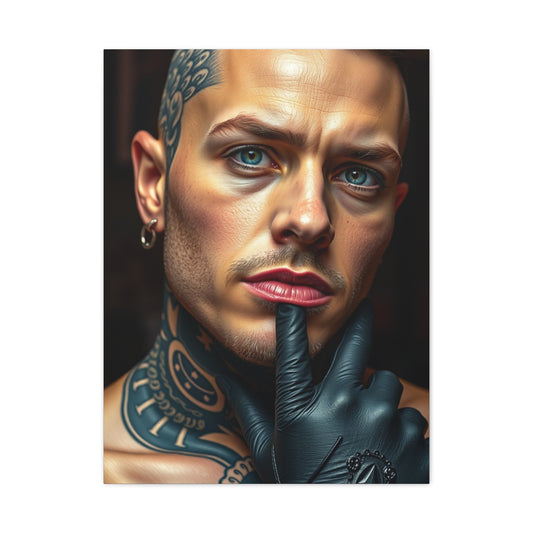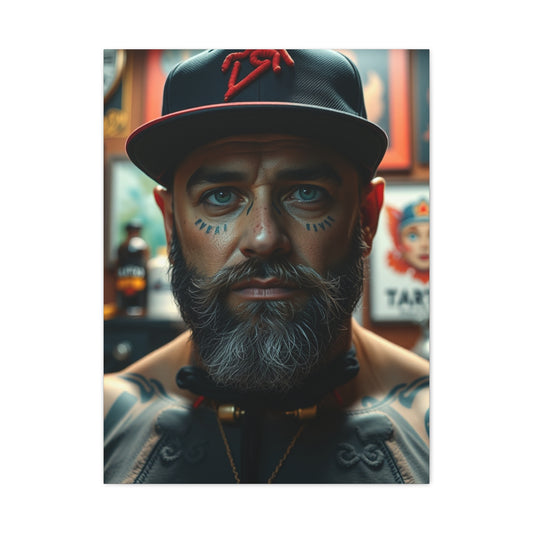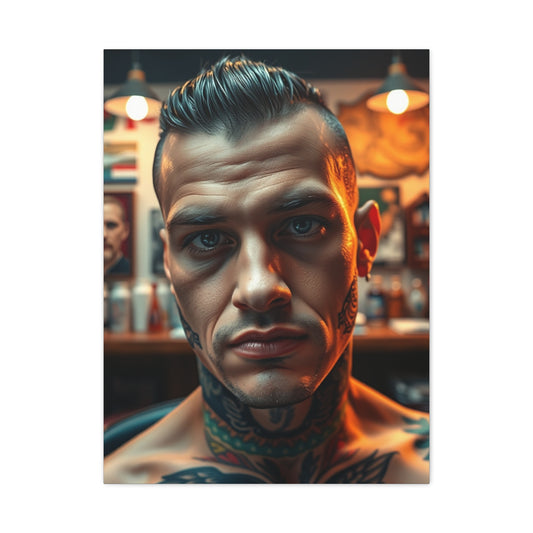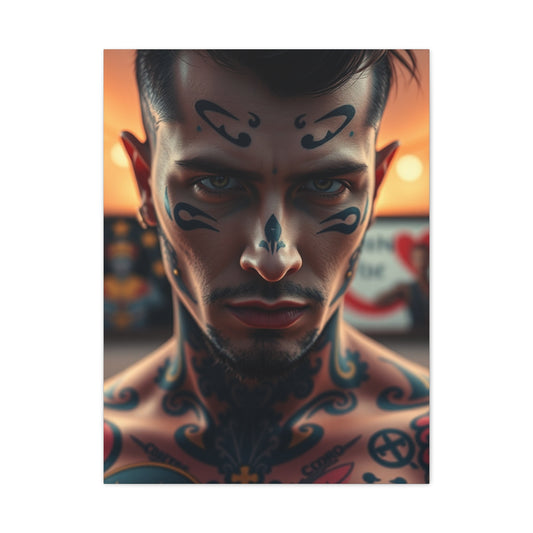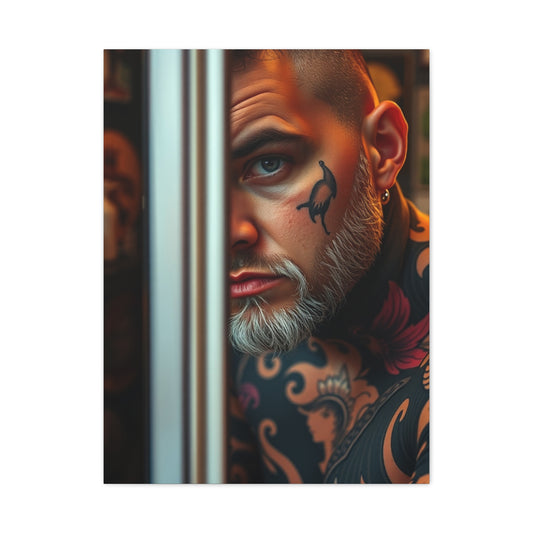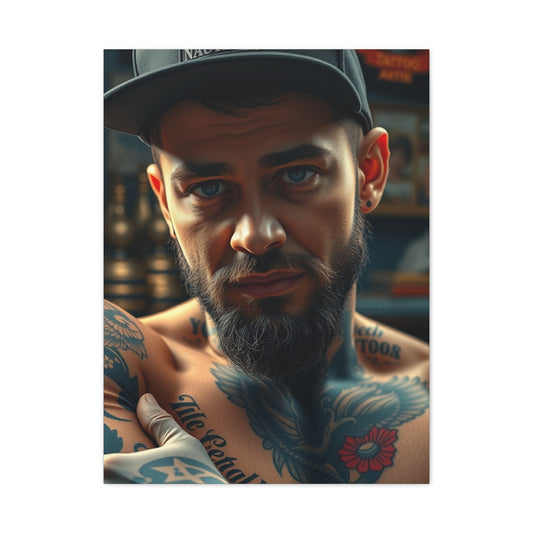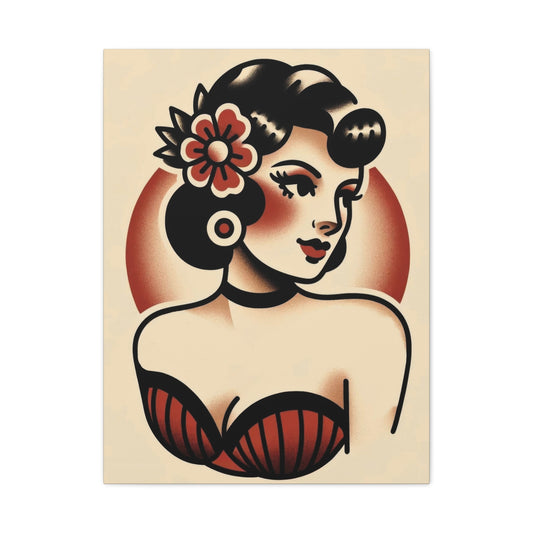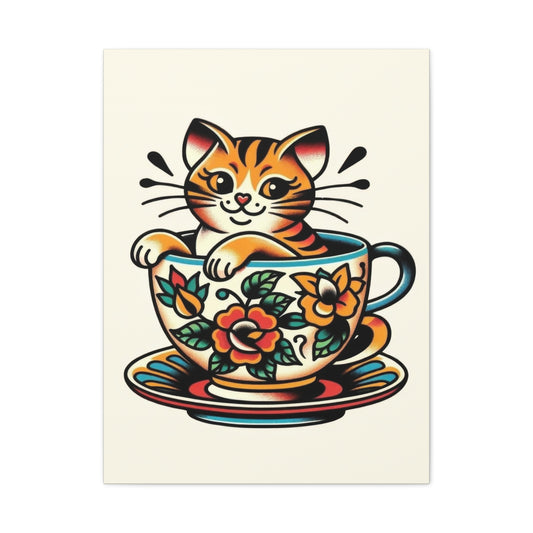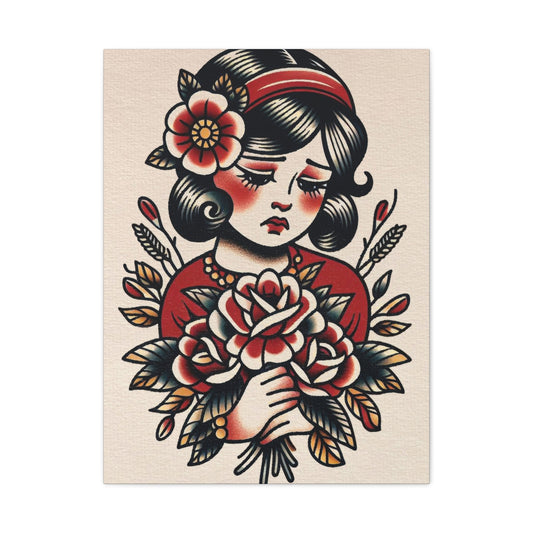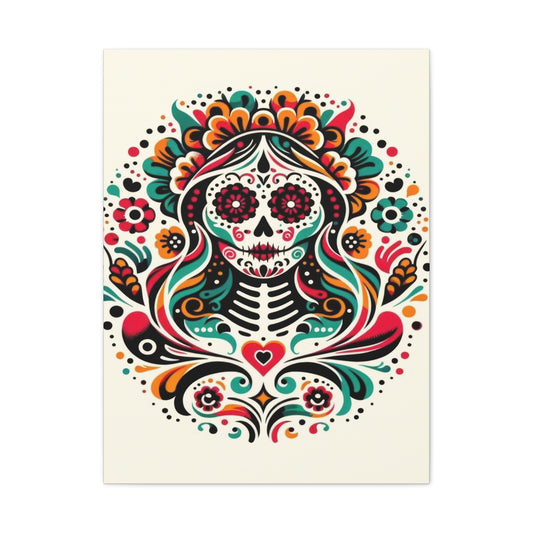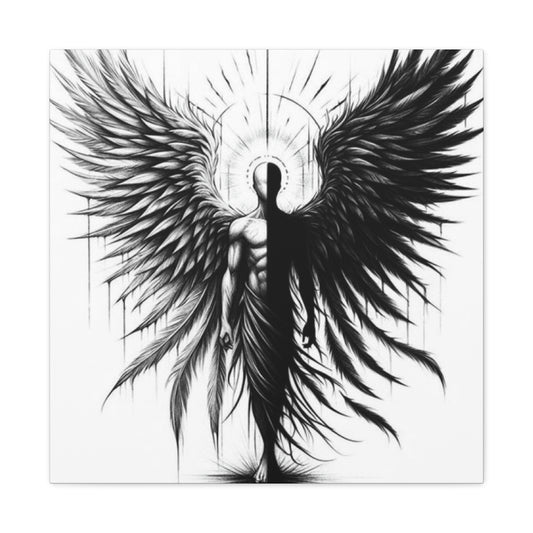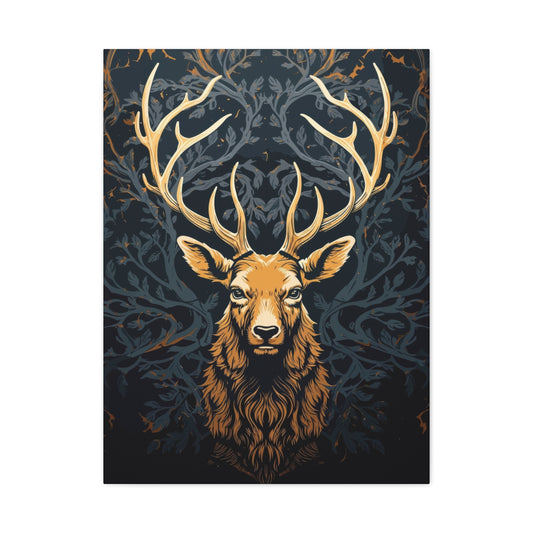The Art of Compact Tattoo Studio Design
Tattoo studios are creative spaces where comfort, efficiency, and functionality are crucial. When working with small studios, these factors become even more critical because limited space can hinder both the artist’s workflow and the client’s experience. Small studios often present challenges such as restricted movement, difficulty in organizing equipment, and limited areas for consultation or relaxation. Understanding these challenges is the first step toward designing a studio that maximizes every inch without compromising style or functionality. The goal is to create an environment where both the artist and client feel comfortable, and where the creative process can flow unhindered.
The Importance of Multi-Functional Furniture
In a small studio, furniture selection is one of the most important decisions you will make. Multi-functional furniture allows you to do more with less by combining several functions into one piece. For example, a chair with built-in storage can serve both as seating for the client and a place to store essential tools. Tables that can fold or convert into storage units allow you to maintain an organized workspace while keeping the studio visually uncluttered. Multi-functional furniture is not just a convenience; it is a necessity in compact spaces where every inch matters. Investing in these pieces can help streamline your workflow, reduce clutter, and improve both the aesthetic and functional aspects of your studio.
Convertible and Foldable Furniture Designs
Convertible and foldable furniture is particularly valuable in small spaces because it allows you to transform your studio depending on the current need. A foldable tattoo table, for example, can be put away when not in use, creating more floor space for other activities. Chairs that double as storage units or have compartments underneath can store inks, needles, or other supplies without taking up additional space. Convertible furniture also allows for flexibility in the studio layout, enabling you to adapt the space for different clients or types of tattoo sessions. By selecting furniture that serves more than one purpose, you can optimize the studio’s potential and create a more comfortable, functional environment.
Prioritizing Adjustability in Furniture
Adjustability is a key feature in tattoo studio furniture. Adjustable chairs and tables allow both the artist and the client to find the most comfortable and efficient positions during tattoo sessions. Adjustable furniture can include hydraulic systems to raise or lower seating height, reclining options for client chairs, and removable or movable parts that can be customized for different body types. These features not only improve comfort but also enhance precision and reduce physical strain on the artist. When working in a small studio, adjustable furniture also allows for greater flexibility in layout since pieces can be repositioned or modified according to the space available.
360-Degree Functionality for Small Studios
In addition to adjustability, some furniture offers 360-degree rotation or mobility, which can significantly improve workflow efficiency. Rotating chairs or tables allows artists to access different angles without moving around excessively, reducing the need for extra floor space. Mobility features such as wheels or casters enable furniture to be moved easily, creating an adaptable environment. In a small studio, this flexibility is critical because it allows the space to accommodate different client positions, multiple artists, or various equipment arrangements. By incorporating furniture with multi-directional movement, you can maximize efficiency and comfort in limited areas.
Compact Designs for Maximum Space
Compact furniture is essential for small tattoo studios. Items that offer full functionality without taking up unnecessary space help maintain a clean and open environment. Slim chairs, narrow tables, and minimalist storage units allow you to fit everything necessary into the studio without overcrowding it. Compact designs are particularly important for studios where multiple artists work ie proximity or where the studio doubles as a consultation or waiting area. By selecting pieces that are both small in size and high in function, you ensure that the studio remains visually appealing and operationally efficient.
Mobile Solutions for Studio Flexibility
Mobility in furniture is another way to enhance small spaces. Chairs, tables, and storage units with wheels allow for easy reconfiguration of the studio layout. Mobile furniture helps create a dynamic workspace that can adapt to different client needs, the number of artists working, or special events. Moving equipment with minimal effort reduces stress on the artist and improves workflow. In small studios, the ability to quickly adjust the layout can also improve client experience by creating a less cramped, more comfortable environment.
Maximizing Vertical Space with Shelving
When floor space is limited, vertical storage becomes crucial. Wall-mounted shelving units, hooks, and floating shelves can hold tools, inks, decorations, or artwork, freeing up the floor for other activities. Vertical storage keeps essential supplies within reach while maintaining a tidy and organized studio. Utilizing wall space effectively also contributes to the studio’s visual appeal, making it appear larger and more open. Properly designed shelving can serve both functional and aesthetic purposes, allowing the studio to remain efficient without feeling cramped.
Wall Hooks and Custom Storage Solutions
Hooks and other wall-mounted solutions allow for efficient organization of tools, equipment, and personal items. Pegboards, for instance, offer a customizable layout for hanging tattoo supplies and small artwork. Wall-mounted cabinets with doors provide a clean storage solution for items that need to be hidden but remain accessible. These solutions are especially useful in small studios where floor space is precious. Implementing custom storage solutions helps maintain a professional appearance, enhances workflow, and ensures that everything has its designated place.
Planning a Functional Layout
An effective layout is fundamental to maximizing small studio spaces. Careful planning ensures that each area serves a specific purpose while maintaining a logical flow. Open floor plans help create a sense of space, even in compact studios. Zoning different areas for tattooing, consultations, and relaxation can optimize both functionality and comfort. Ensuring smooth flow from one area to another reduces unnecessary movement and allows the artist to work efficiently. Thoughtful layouts also contribute to a welcoming atmosphere for clients, enhancing their overall experience.
Creating Zones for Different Activities
Dividing a small studio into zones ensures that each area has a clear purpose. Designated spaces for tattooing, consultations, waiting, and storage help minimize distractions and clutter. Zoning also allows artists to focus on their work while maintaining organized and accessible supplies. Even in a compact space, well-defined zones can improve workflow, safety, and comfort. By using furniture placement, flooring changes, or subtle visual cues, small studios can achieve a sense of order and efficiency without feeling cramped or restrictive.
Flow and Accessibility in Small Studios
Maintaining good flow in a small studio is essential to avoid congestion and ensure safety. Clear pathways between workstations, storage, and client areas allow for smooth movement. Accessibility also involves positioning furniture to optimize reach and functionality for both artists and clients. In small studios, every placement decision can impact the overall efficiency and experience. Properly designed flow improves workflow, reduces accidents, and enhances the comfort of the studio environment.
Enhancing Aesthetics in Compact Spaces
While functionality is critical, aesthetics play a major role in creating a professional and inviting tattoo studio. Choosing furniture and layouts that complement the studio’s theme can enhance the client experience. Compact, stylish pieces, clever use of wall space, and thoughtful lighting can make even the smallest studios feel spacious and welcoming. A visually appealing studio not only reflects professionalism but also contributes to client satisfaction and repeat business. By integrating design principles with practical considerations, small studios can achieve a balance between style and functionality.
Benefits of Investing in Quality Furniture
Investing in high-quality, functional furniture provides long-term benefits for small tattoo studios. Durable pieces withstand frequent use, reducing replacement costs. Multi-functional and adjustable designs improve workflow and comfort, enhancing both artist and client experiences. Quality furniture also contributes to the overall image of the studio, projecting professionalism and care. By making thoughtful investments, small studios can operate efficiently, remain organized, and create a positive impression that encourages repeat business.
Selecting the Right Furniture for Small Tattoo Studios
Choosing the right furniture is crucial in small tattoo studios, as it directly impacts workflow, comfort, and efficiency. In compact spaces, each piece must serve multiple purposes while remaining durable and visually appealing. Studio owners and artists should evaluate their space carefully before investing in furniture, taking into account the studio’s layout, the types of tattoos offered, and the number of clients and artists working simultaneously. Prioritizing multi-functional, adjustable, and mobile furniture allows small studios to operate at maximum efficiency without sacrificing style or comfort. Understanding furniture options and their benefits is essential to creating a studio that feels professional, organized, and welcoming.
Multi-Functional Chairs and Tables
Multi-functional chairs and tables are the backbone of a small tattoo studio. Client chairs that recline, rotate, or adjust in height provide comfort while allowing the artist to maintain optimal positioning. Some chairs come with built-in storage compartments, providing easy access to inks, needles, and other supplies. Tables with foldable designs or adjustable sections allow for versatility, enabling the artist to modify the workspace depending on the session or client needs. By choosing furniture that serves multiple functions, small studios can reduce clutter, save money, and maintain a visually appealing environment. Multi-functional pieces are particularly valuable for studios that host multiple artists or offer different types of tattoo services, as they can adapt to various workflow requirements.
Artist Chairs and Ergonomic Design
Artists spend long hours in a tattoo studio, often in fixed positions that can strain the back, neck, and shoulders. Ergonomically designed chairs for artists are critical to prevent fatigue and maintain precision. Chairs with adjustable heights, lumbar support, and reclining features allow artists to maintain proper posture during extended sessions. Mobility features, such as swivel capabilities and wheels, enhance efficiency in small spaces, allowing the artist to move easily without repositioning the client repeatedly. Selecting chairs that combine ergonomics with compact design ensures that the artist remains comfortable while making the best use of limited studio space.
Compact Furniture for Efficient Use of Space
Compact furniture is essential in studios with limited floor area. Slim-profile chairs and tables maximize available space without compromising functionality. Compact pieces can fit into narrow corners or be moved easily when needed, allowing for flexible layouts. Choosing furniture that is lightweight but sturdy ensures that it can withstand daily use while being repositioned or stored when not in use. Compact designs also contribute to the studio’s aesthetic by reducing visual clutter and maintaining open pathways for both artists and clients.
Foldable and Mobile Furniture Options
Foldable and mobile furniture provides unmatched flexibility in small studios. Foldable tables can be stowed away when not in use, freeing up space for consultations or client waiting areas. Mobile chairs and tables on wheels can be repositioned quickly, accommodating different clients or artistic needs. These features are particularly important in studios that offer walk-in services or host multiple artists simultaneously. Foldable and mobile furniture not only maximizes space but also enhances workflow by allowing the studio layout to adapt seamlessly to changing requirements.
Storage Solutions for Small Studios
Efficient storage is crucial to maintaining an organized and functional tattoo studio. Small studios benefit from a combination of under-seat storage, wall-mounted shelving, and modular units. Chairs with built-in compartments keep essential tools close at hand, while wall-mounted shelves and hooks free up floor space. Modular storage units can be customized to fit the studio’s specific needs, providing flexibility as the business grows or evolves. Proper storage ensures that supplies are accessible, reduces clutter, and creates a professional, welcoming environment for clients.
Wall-Mounted Storage and Vertical Space Utilization
When floor space is limited, vertical storage becomes invaluable. Floating shelves, pegboards, and wall hooks can hold inks, needles, artwork, and other supplies, keeping the floor clear and the workspace organized. Wall-mounted cabinets provide additional storage for items that need to be kept out of sight while remaining easily accessible. Utilizing vertical space also enhances the studio’s visual appeal, making the space appear larger and more open. By maximizing wall space, small studios can achieve both functional and aesthetic benefits.
Lighting Considerations in Small Studios
Proper lighting is essential in tattoo studios, particularly in small spaces where shadows and cramped corners can hinder precision. Adjustable task lighting ensures that the artist has clear visibility of the area being tattooed, reducing mistakes and improving overall quality. Overhead lighting should be bright but diffuse, minimizing glare while providing uniform illumination. Consider using a combination of natural and artificial light sources to create a comfortable environment for both clients and artists. Well-placed lighting also enhances the studio’s ambiance, making it feel more spacious and inviting.
Maintaining Workflow Efficiency
An efficient workflow is critical in small tattoo studios, as limited space can easily become congested. Arrange furniture to allow for clear pathways between workstations, storage areas, and client zones. Minimize unnecessary movement by positioning essential tools and supplies within easy reach. Zoning different areas for tattooing, consultations, and relaxation helps maintain order and ensures that clients feel comfortable. Streamlined workflows reduce stress on both the artist and the client, enhancing productivity and overall experience.
Client Comfort in Compact Studios
Client comfort should remain a top priority, even in small studios. Adjustable chairs and tables allow clients to relax during long sessions, while thoughtful furniture placement ensures privacy and personal space. Providing a welcoming atmosphere through clean, organized spaces and aesthetically pleasing design enhances the client experience. Comfortable seating, proper lighting, and a visually appealing environment contribute to a positive impression, increasing the likelihood of repeat visits and referrals.
Ergonomic Considerations for Artists
In addition to client comfort, the artist’s well-being is essential. Ergonomic furniture, adjustable workstations, and proper studio layout help prevent fatigue and strain. Small studios often require creative solutions to maintain ergonomics while working in a limited space. Artists can benefit from chairs and tables that adjust to various angles, allowing them to work efficiently without compromising posture. A focus on ergonomics ensures that the artist can provide high-quality work consistently while maintaining long-term health.
Integrating Technology in Small Studios
Modern tattoo studios often incorporate technology to enhance efficiency and client experience. Tablets for design previews, digital appointment scheduling, and electronic storage of client records reduce clutter from paper and allow for smoother operations. Integrating technology strategically helps small studios maximize available space while providing professional, modern services. Digital tools also enhance workflow by streamlining administrative tasks, allowing the artist to focus on creative work.
Workflow Optimization Through Furniture Arrangement
Furniture arrangement plays a critical role in optimizing workflow in small studios. Position chairs and tables to allow for unobstructed access to tools and supplies. Create zones that facilitate smooth transitions between tattooing, consultations, and post-care instructions. Keep high-traffic areas clear to prevent congestion and ensure safety. Strategic furniture placement enhances efficiency, allowing artists to work comfortably and clients to enjoy a seamless experience.
Combining Aesthetics and Functionality
In small studios, combining aesthetics with functionality is essential. Furniture should not only serve practical purposes but also contribute to the studio’s overall visual appeal. Sleek, compact designs maintain a clean look, while well-chosen colors and textures create an inviting atmosphere. Thoughtful design choices ensure that the studio appears professional, organized, and spacious, even when physical space is limited. By balancing function and style, small studios can create a positive impression on clients and foster a productive environment for artists.
The Role of Modular Systems
Modular furniture systems offer adaptability for small studios. Components can be added, removed, or rearranged as needed, allowing the studio to grow and change over time. Modular systems are particularly useful for storage, seating, and workstations, as they provide flexibility in layout and function. By adopting modular solutions, small studios can maintain efficiency, organization, and comfort while adapting to evolving business needs.
Custom Solutions for Unique Spaces
Every small studio is unique, with its own dimensions, layout challenges, and workflow requirements. Custom furniture solutions allow studio owners to optimize space based on specific needs. Tailored workstations, storage units, and seating can fit precisely into limited areas, ensuring that no space is wasted. Custom solutions also allow for unique design choices that reflect the studio’s personality and brand, creating a memorable environment for clients and artists alike.
Prioritizing Durability and Maintenance
Durability and ease of maintenance are crucial when selecting furniture for small studios. Frequent use, exposure to inks and cleaning solutions, and repeated adjustments demand sturdy, reliable materials. Furniture that is easy to clean and resistant to wear and tear reduces long-term costs and ensures a professional, hygienic environment. Prioritizing quality and durability in furniture selection helps small studios maintain efficiency, safety, and aesthetic appeal over time.
Advanced Layout Strategies for Small Tattoo Studios
The layout of a tattoo studio plays a critical role in determining its efficiency and overall client experience. In small spaces, thoughtful planning is essential to ensure that each area serves a purpose while maintaining accessibility and comfort. An effective layout maximizes usable space, reduces clutter, and creates a professional, inviting atmosphere. Advanced layout strategies involve careful zoning, optimizing traffic flow, and strategically positioning furniture and equipment. By addressing these factors, small studios can operate efficiently, enhance artist performance, and create a positive environment for clients.
Creating Functional Zones
Dividing a small studio into functional zones ensures that each area supports specific activities. Tattooing zones should be equipped with all necessary tools and furniture, allowing the artist to work without interruptions. Consultation zones provide a private space for client discussions and design planning. Waiting areas, even if compact, can offer comfort with minimal seating and visually appealing design elements. Storage zones should be organized for easy access to inks, needles, and other supplies. Properly defined zones enhance workflow, prevent congestion, and improve the client experience, ensuring that every aspect of the studio functions smoothly.
Open Floor Plans for Small Studios
An open floor plan can make a small studio feel larger and more inviting. Minimizing partitions and using transparent or low-profile dividers allows natural light to flow and improves visibility across the studio. Open layouts facilitate movement, enabling the artist to access different workstations quickly. They also create a sense of space, reducing the feeling of confinement often associated with small studios. By incorporating open floor plan principles, compact studios can achieve a balance between functionality and comfort while maintaining a professional appearance.
Strategic Furniture Placement
Furniture placement is critical in small studios to optimize space and efficiency. Chairs and tables should be positioned to allow easy access to tools and movement for the artist. Mobile and adjustable furniture enhances flexibility, enabling the layout to adapt to different sessions or client needs. Compact seating and tables can fit into corners or along walls, freeing central areas for circulation. Thoughtful placement reduces clutter, improves workflow, and contributes to a visually organized environment that feels spacious despite physical limitations.
Enhancing Workflow with Pathways
Clear and unobstructed pathways are essential for a a smooth workflow in small tattoo studios. Paths between workstations, storage areas, and client zones should allow for easy movement without collisions or congestion. Efficient pathways minimize unnecessary steps, reduce fatigue for artists, and improve client comfort. Consider the placement of furniture, equipment, and storage units to create natural routes that enhance productivity. Proper pathway planning ensures that even the smallest studios can maintain a professional and functional environment.
Innovative Storage Solutions
Storage is one of the most significant challenges in small tattoo studios. Innovative storage solutions maximize space while maintaining organization and accessibility. Modular shelving units, under-seat compartments, and wall-mounted storage options allow studios to store supplies efficiently without cluttering the floor. Rolling carts provide mobile storage that can move between workstations as needed. Customizable storage systems ensure that every tool has a designated place, improving workflow and reducing time spent searching for items. By adopting innovative storage strategies, small studios can maintain a tidy, professional, and functional environment.
Utilizing Vertical Space
Vertical space is often underutilized in compact studios. Installing shelves, hooks, and pegboards on walls can store inks, needles, artwork, and other supplies, freeing floor space for movement and client seating. Floating shelves provide storage without taking up room, while wall-mounted cabinets offer closed storage for items that need protection or privacy. Vertical storage enhances the studio’s visual appeal, making it appear larger and more organized. Effective use of vertical space ensures that small studios remain functional and visually balanced.
Integrating Rolling and Modular Storage
Rolling storage units are particularly valuable in small studios because they can be moved between workstations as needed. These units keep tools accessible while allowing flexibility in layout. Modular storage systems further enhance adaptability by enabling studio owners to reconfigure shelving, drawers, or compartments according to changing requirements. Combining rolling and modular storage creates a dynamic system that supports workflow efficiency, reduces clutter, and maintains organization in compact environments.
Optimizing Lighting and Ambiance
Lighting is a critical factor in small tattoo studios, affecting both artist performance and client comfort. Proper task lighting ensures visibility for detailed work, while ambient lighting creates a welcoming atmosphere. Adjustable lighting allows artists to control brightness and angle for each session, reducing eye strain and improving precision. Incorporating a combination of natural and artificial light sources enhances spatial perception, making the studio appear larger and more open. Thoughtful lighting design contributes to workflow efficiency, comfort, and overall aesthetic appeal.
Ergonomic Considerations for Workflow Efficiency
Ergonomics plays a central role in maximizing workflow efficiency in small studios. Artists must maintain proper posture and positioning to avoid fatigue, particularly during long sessions. Adjustable chairs, tables, and workstations allow artists to customize their environment, ensuring comfort and precision. Compact and mobile furniture supports ergonomic practices by enabling flexible positioning without sacrificing space. Prioritizing ergonomics enhances productivity, reduces the risk of injury, and improves the overall quality of tattoo work in limited studio spaces.
Integrating Technology to Streamline Operations
Technology can significantly enhance efficiency in small tattoo studios. Digital tablets for design previews, appointment scheduling software, and electronic record keeping reduce reliance on paper and free up physical space. Incorporating technology into the studio layout minimizes clutter and streamlines administrative tasks. Artists can focus on creative work while technology supports workflow management, client communication, and design presentation. Strategic technology integration allows small studios to operate efficiently while maintaining a professional and organized environment.
Workflow Optimization Through Furniture Configuration
Arranging furniture strategically improves workflow efficiency in small studios. Positioning chairs, tables, and storage units to minimize movement and facilitate easy access to tools allows artists to work smoothly. Flexible furniture configurations accommodate multiple clients or artists simultaneously, ensuring that the studio can handle varying workloads. Adjustability and mobility in furniture placement further enhance workflow, creating a dynamic environment that adapts to different sessions and requirements. Proper configuration reduces congestion, improves client experience, and increases overall productivity.
Incorporating Space-Saving Techniques
Small studios benefit from space-saving techniques that maximize usability without compromising functionality. Foldable tables and chairs can be stored when not in use, creating open areas for consultation or relaxation. Wall-mounted storage, vertical shelving, and compact furniture reduce floor space requirements. Multi-purpose furniture combines seating, storage, and work surfaces into a single piece. By implementing space-saving strategies, small studios can maintain organization, enhance workflow, and create a more comfortable environment for both clients and artists.
Maintaining Cleanliness and Organization
Cleanliness and organization are essential in small tattoo studios, impacting both safety and client perception. Efficient storage, proper workflow design, and designated zones contribute to maintaining a tidy environment. Regular cleaning and maintenance of furniture and equipment prevent clutter and ensure a professional appearance. Organized spaces also improve efficiency by allowing artists to locate tools quickly and minimize interruptions during sessions. By emphasizing cleanliness and order, small studios can create a welcoming and functional workspace that enhances both artist performance and client satisfaction.
Enhancing Client Experience in Compact Spaces
Client experience should remain a central focus, even in limited studio spaces. Comfortable seating, organized surroundings, and thoughtful lighting contribute to a positive impression. Privacy can be enhanced through partitions, strategic furniture placement, or visual cues, ensuring that clients feel at ease. Efficient workflows and accessible tools create smoother sessions, reducing wait times and improving overall satisfaction. Small studios can provide a high-quality client experience by balancing comfort, functionality, and aesthetics in their design and layout.
Combining Aesthetics and Functionality
Aesthetic appeal and functional design go hand in hand in small tattoo studios. Furniture, lighting, and storage solutions should be chosen not only for practicality but also for visual impact. Sleek, compact designs maintain a clean, professional look while enhancing the perception of space. Thoughtful color schemes, textures, and lighting create a welcoming environment for clients and a motivating workspace for artists. By integrating aesthetics with functionality, small studios can achieve both operational efficiency and a strong visual identity that attracts clients.
Customization and Flexibility in Layouts
Flexibility and customization are key to maximizing the potential of small tattoo studios. Adjustable, modular, and multi-functional furniture allows the studio to adapt to changing needs, whether adding more clients, introducing new services, or accommodating multiple artists. Custom solutions tailored to the studio’s dimensions and workflow requirements ensure optimal use of space. Flexibility in layout supports both efficiency and creativity, enabling the studio to evolve as the business grows while maintaining comfort and functionality.
Leveraging Minimalism in Studio Design
Minimalist design principles are particularly effective in small tattoo studios. By reducing unnecessary furniture, décor, and clutter, studios can create open, functional spaces that feel larger than they are. Minimalism emphasizes quality over quantity, focusing on versatile, durable, and aesthetically pleasing furniture. Clean lines, neutral color palettes, and efficient storage solutions contribute to a professional, organized environment. Adopting minimalism allows small studios to prioritize workflow, comfort, and client experience without overcrowding the space.
Future-Proofing Your Small Tattoo Studio
Small tattoo studios must be designed with longevity and adaptability in mind. As trends, equipment, and client expectations evolve, the studio should be able to adapt without requiring major renovations. Future-proofing involves selecting durable, flexible furniture, incorporating technology, and planning layouts that can accommodate growth. By anticipating future needs, small studios can remain competitive, efficient, and appealing to clients for years to come. Planning for flexibility ensures that the studio continues to operate smoothly even as the number of clients or artists changes, or as services expand.
Durable Furniture for Long-Term Use
Investing in durable furniture is critical for small tattoo studios. Chairs, tables, and storage units are subject to constant use, exposure to inks and cleaning products, and frequent repositioning. Selecting high-quality materials that resist wear and tear ensures that furniture remains functional and visually appealing over time. Durable furniture also reduces long-term costs by minimizing replacements and maintenance. In small studios, where each piece of furniture serves multiple purposes, durability ensures reliability and contributes to a professional image.
Modular and Adjustable Solutions
Modular and adjustable furniture is an essential component of future-proofing. Modular units allow for easy reconfiguration of storage, seating, or workstations as the studio’s needs change. Adjustable chairs and tables accommodate different client sizes, artistic techniques, and session durations. Flexibility in furniture ensures that the studio can adapt to new equipment, additional artists, or evolving service offerings without requiring major renovations. Incorporating modular and adjustable solutions makes small studios more versatile, efficient, and prepared for future growth.
Integrating Technology for a Modern Studio
Technology plays a central role in the modern tattoo studio, particularly for compact spaces. Digital tools such as tablets for design previews, online appointment scheduling, electronic client records, and mobile payment systems reduce reliance on physical storage and streamline workflow. Integrating technology into furniture or workstation design can further enhance efficiency. For example, chairs with built-in charging ports for devices or workstations designed to accommodate tablets and monitors improve functionality. Technology integration not only enhances workflow but also provides a professional, contemporary client experience.
Efficient Workflow Planning
Planning workflow efficiently is critical in small tattoo studios, where space constraints can hinder productivity. Analyzing how clients move through the studio, how tools are accessed, and how artists interact with equipment helps identify areas for improvement. Strategies such as grouping frequently used tools within arm’s reach, using mobile workstations, and positioning furniture to minimize unnecessary movement contribute to smoother operations. Efficient workflow reduces fatigue, increases productivity, and enhances the overall client experience, ensuring the studio operates at peak performance even in limited space.
Enhancing Client Experience
Client satisfaction is central to the success of any tattoo studio. In small spaces, attention to detail in comfort, privacy, and aesthetics significantly impacts client experience. Adjustable chairs allow clients to remain comfortable during long sessions. Thoughtful lighting and climate control create a pleasant environment. Privacy can be enhanced through partitions or strategic furniture placement, ensuring clients feel at ease. Organized, uncluttered spaces convey professionalism and attention to detail. Prioritizing client experience encourages repeat visits, referrals, and long-term loyalty.
Space Optimization Techniques
Optimizing space is a continuous process in small tattoo studios. Techniques such as vertical storage, foldable or mobile furniture, and multi-purpose workstations maximize usable space without sacrificing functionality. Rolling carts and modular units provide flexibility in layout, allowing the studio to adapt to different sessions or client numbers. Utilizing wall-mounted storage and under-seat compartments frees floor space and improves accessibility. Effective space optimization enhances workflow, maintains organization, and creates a more open, welcoming atmosphere for clients.
Storage Innovations for Small Studios
Innovative storage solutions are essential to maintaining order in compact tattoo studios. Modular shelving systems, pegboards, and wall-mounted cabinets allow supplies to be stored efficiently and accessed easily. Custom storage units can accommodate unique equipment or tools, ensuring everything has a designated place. Mobile storage solutions provide flexibility, enabling artists to move tools between workstations as needed. Advanced storage innovations reduce clutter, streamline workflow, and maintain a professional appearance, even in small studios.
Sustainable Design Choices
Sustainability is increasingly important in modern studio design. Selecting furniture made from durable, eco-friendly materials reduces environmental impact and enhances long-term value. Efficient use of lighting, energy-saving appliances, and recyclable materials contributes to a sustainable workspace. Sustainable design practices align with client values and enhance the studio’s reputation. In small studios, sustainable choices often coincide with space-saving principles, as durable, multifunctional furniture reduces the need for replacements and excessive consumption.
Incorporating Minimalism and Clean Lines
Minimalism is particularly effective in small studios. Reducing unnecessary furniture, décor, and clutter creates a sense of openness and enhances workflow. Clean lines and neutral color schemes contribute to a visually organized environment. Minimalist design emphasizes functionality, ensuring that each element serves a purpose while maintaining aesthetic appeal. By adopting minimalist principles, small studios can balance style and efficiency, creating spaces that feel larger and more inviting despite physical constraints.
Workflow Automation and Time-Saving Tools
Automation tools and time-saving strategies can greatly enhance efficiency in compact studios. Digital scheduling, inventory management software, and design templates streamline routine tasks. Automated reminders for appointments or follow-ups improve client communication and reduce administrative workload. Integrating these tools allows artists to focus on creative work while maintaining organization and efficiency. Workflow automation ensures that small studios operate smoothly, even during peak periods, without compromising quality or client satisfaction.
Maintaining a Professional Appearance
Professional appearance is critical in small tattoo studios, as clients often equate cleanliness and organization with quality of service. Maintaining a tidy workspace, using visually cohesive furniture, and organizing tools and supplies systematically convey professionalism. Attention to detail in design and layout enhances client confidence and trust. In small studios, where every element is visible, consistent attention to aesthetics and organization is particularly important. A professional appearance also contributes to a positive working environment for artists.
Client Comfort and Accessibility
Ensuring client comfort and accessibility remains a top priority in small studios. Adjustable chairs and tables accommodate different body types and session lengths, reducing fatigue. Clear pathways and logical layout ensure that clients can move easily through the studio. Thoughtful consideration of lighting, temperature, and seating options further enhances the experience. By prioritizing comfort and accessibility, small studios foster a welcoming environment that encourages repeat business and positive word-of-mouth.
Flexibility for Future Growth
Small tattoo studios must plan for potential growth in clients, services, and artists. Flexible furniture, modular storage, and adaptable layouts allow the studio to accommodate increased demand without significant renovations. Preparing for future growth ensures that the studio can scale efficiently while maintaining workflow, client satisfaction, and overall functionality. Flexibility also allows studio owners to introduce new services or technologies as trends evolve, keeping the business competitive and innovative.
Balancing Functionality and Style
Balancing functionality and style is essential in small studios. Furniture should provide comfort, efficiency, and adaptability while contributing to the studio’s overall aesthetic. Sleek, compact designs, cohesive color schemes, and well-chosen décor elements create an appealing atmosphere without overcrowding the space. Balancing these elements ensures that small studios remain practical for daily operations while providing an inviting and visually impressive experience for clients.
Leveraging Compact Technology
Compact technology enhances efficiency in limited spaces. Tablets, monitors, and digital payment systems can be integrated into workstations or furniture, reducing the need for bulky equipment. Wireless devices minimize cables and clutter, while mobile tools provide flexibility for different sessions. Incorporating compact technology supports workflow, organization, and client interaction, allowing small studios to maintain a modern and efficient environment.
Continuous Improvement and Adaptation
Small tattoo studios benefit from continuous evaluation and adaptation. Regularly assessing furniture placement, storage efficiency, workflow processes, and client feedback helps identify areas for improvement. Implementing changes gradually ensures that the studio evolves without disrupting operations. Continuous improvement fosters innovation, maintains efficiency, and enhances client experience. Studios that adapt proactively remain competitive, organized, and capable of handling changing demands over time.
Creating a Lasting Impression
The ultimate goal of a small tattoo studio is to leave a lasting impression on clients. A well-organized, efficient, and visually appealing environment enhances client satisfaction and encourages loyalty. Comfort, accessibility, professionalism, and aesthetic appeal contribute to a positive experience that clients remember. By carefully designing every aspect of the studio, from furniture to layout to workflow, small spaces can create an environment that feels welcoming, efficient, and memorable.
Conclusion:
Future-proofing small tattoo studios involves combining durability, flexibility, and technology with efficient workflow, client comfort, and aesthetic design. Modular and adjustable furniture, vertical and innovative storage solutions, minimalism, and compact technology enable studios to maximize limited space while maintaining functionality and style. Attention to workflow, ergonomics, client experience, and sustainability ensures that small studios remain competitive, professional, and welcoming. By continuously adapting and improving, small studios can thrive long-term, providing exceptional experiences for both clients and artists while maximizing the potential of their compact spaces.

